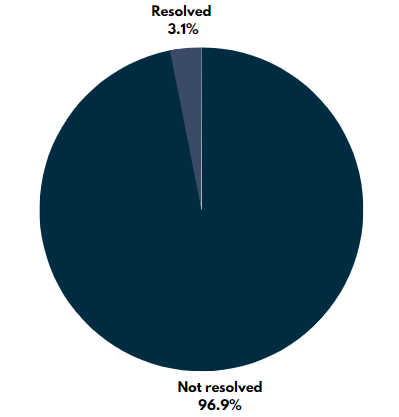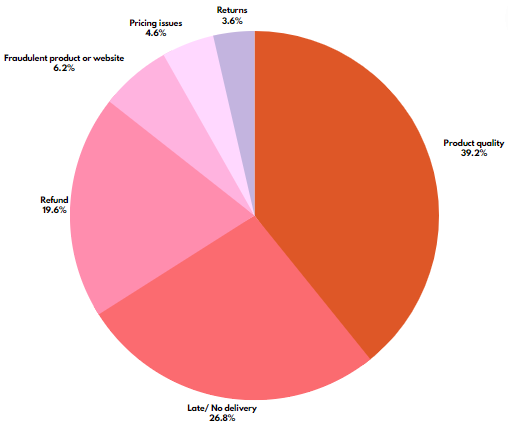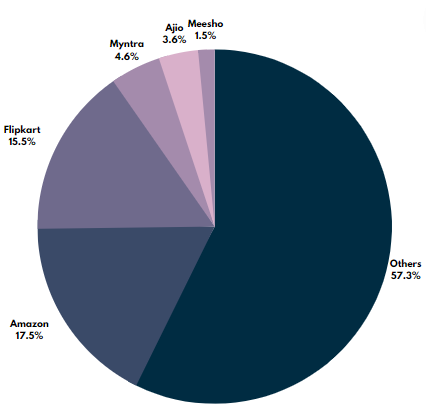Citizen consumer and civic Action Group (CAG), for the last 37 years, has been offering a free and voluntary consumer protection service. Consumers can write in or call with their grievances, which could be against services or goods bought by them. They will receive advice and support throughout the redressal process.
The first point of contact for an aggrieved consumer is the consumer complaints service offered by the company/service provider itself. Failing a resolution here, consumers typically contact registered consumer organisations such as CAG, which represent the matter on behalf of consumers to the opposite parties to have these issues resolved amicably. It has proved to be a successful effort for CAG, as, on an average, almost 70% of consumer complaints are resolved at this level of intervention itself. Businesses recognise the credibility of the organisation and CAG’s professional approach in dealing with complaints, as CAG looks into the merits of the case and advises/ acts accordingly. It is only when the opposite party fails to respond or provide a satisfactory resolution that CAG advises the consumer to consider approaching other Fora for redress.
E-Commerce Complaints:
The e-commerce market in India is on an upward trajectory, especially since the onset of COVID. It attracts a wide range of people looking for a wide range of products. While e-com portals have opened up markets for small sellers, and have broken down geographical boundaries for buyers, it also comes with some inherent risks: compromised product quality, fraudulent products, not honouring refund policies, etc. While the E-commerce Rules address these to some extent, challenges still persist.
Consumer complaints related to the e-commerce sector have been steadily increasing over the years. The National Consumer Helpline, a grievance portal managed by the Ministry of Consumer Affairs, received 1,83,851 complaints against the e-commerce sector alone, during 2021-22. While the numbers are much lesser, CAG’s help desk also has been witnessing a proportionate increase in the e-commerce complaints over the last 2.5 years. This report offers a brief analysis of complaints received against the e-com sector over the years 2021-22.
With e-commerce, an individual can buy any type of product and avail many services on a tap. The complaints received by CAG mentioned a range of products including clothing, accessories, electronic mobiles, gadgets, sportswear, shoes, sports gear, food, edible products, furniture, bags, grocery, footwear, stationery, home appliances, bicycle, mattress, electrical items, toys, medicines & medical equipment; and the nature of complaints were largely about late or no delivery, failure to meet the quality promised, refusal to replace/ refund, issues around pricing, wrong products, fraudulent websites
Resolution:
Data indicate that only 3.1% of the complaints received by CAG have been resolved; and that too by persistently approaching the grievance cell provided by the e-commerce platform. The rest (96.9% of complaints) remained unresolved. It is pertinent to mention that unlike other companies/ service providers, e-com portals often fail to heed to representations from consumer groups like CAG, which is unfortunate.

Fig 1: Resolution of E-commerce complaints
Nature of consumer grievances
For garments, the main grievance was either the wrong product being delivered or the quality of the product being below par. The main grievance for electrical appliances was fake products delivered or in some cases, empty boxes being delivered. The grievances could be broken down thus: 39.2% on receiving a different product / poor quality product / fewer quantity of product, followed by 26.8% where the product was never delivered or delivered late, 19.6 % grievances were around the issue of refund. 6.2% had ordered products that did not exist or were from fraudulent websites. 4.6% experienced issues with pricing and around 3.6% had issues with return of goods purchased.

Fig 2: Nature of complaints
E-commerce platforms
In India, there is a constant rise in the internet user base alongside an increase in the number of e-commerce entities. Among the renowned portals, the highest number of complaints received was against Amazon at 17.5%, followed by Flipkart at 15.5%, Myntra at 4.6%, Ajio at 3.6%, and Meesho at 1.5%. The remaining 57.3% of complaints were spread out among smaller e-com entities.

Fig 3: E-commerce platforms with percentage of complaints
Conclusion
Online shopping is a virtual transaction where the buyer and trader are not on an equal footing. Much of it depends on the credibility of the trader and the faith that a consumer bestows on the trader. With no physical shop to verify goods or to approach in case of a grievance, there is much room for deceit or deficiency in service.
The formulation of the e-com rules has been a small beginning in the right direction. However, between the e-com rules, and the Consumer Protection Act, the consumer is still offered only piecemeal protection. This conversely means that businesses that offer sub-par services or goods are very often getting away with this. This is especially true when the cost of the goods is perceived as low; and the hassle of approaching the consumer court, high, making consumers reluctant to approach higher forms of redressal. This often leaves the consumer complaints procedure offered by the portal as the only form of redressal that consumers are willing to use.
What is a worrying finding from this analysis is that even with support from an organisation such as CAG with a proven mandate for consumer protection, a large percentage of grievances still go unresolved. It is high time that e-commerce portals recognise the important role that reputed consumer organisations play in getting issues resolved amicably that benefit both the consumers and the businesses, and respond proactively.
Customer vigilance is equally important. Customers need to research thoroughly to ensure the trustworthiness of an e-com company / portal before trusting it with a purchase. There are several fraudulent websites and fly-by-night operators who have mastered the techniques of cheating customers. In case of trouble with these companies, it could be impossible to even trace them, let alone seek redressal.
As the e-com sector is set to burgeon in the coming years, it is essential that checks are set in place to keep consumers truly safe. Streamlined systems that will make redressal mechanisms easy to navigate; and robust policies that are enforced to keep businesses accountable need to be prioritised.